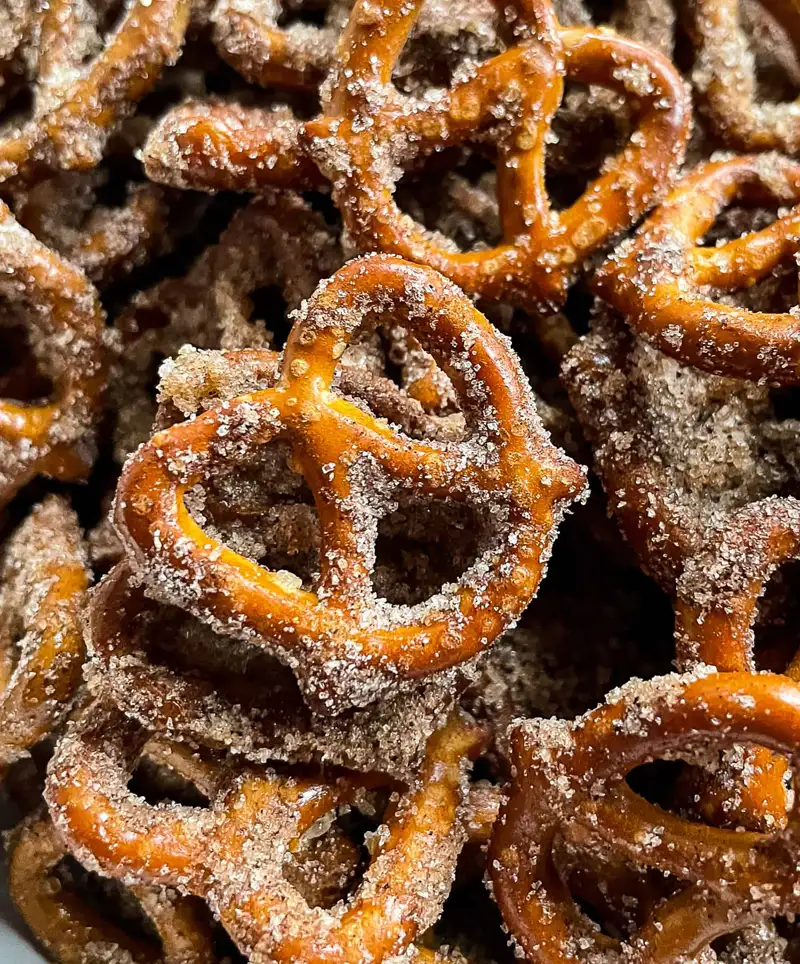A Twist on Tradition
National Pretzel Day, observed annually on April 26th, offers a delightful opportunity to indulge in one of America’s most beloved snacks. Whether you prefer your pretzels warm and doughy or crisp and crunchy, this day is about celebrating this twisted treat's rich history, versatility, and cultural significance. From street vendors selling oversized soft pretzels slathered in mustard to the satisfying crunch of a bag of hard pretzels, pretzels have firmly knotted themselves into culinary traditions worldwide.
The Origins of the Pretzel
The story of the pretzel is as full of twists and turns as the snack itself. Its origins stretch back to the Early Middle Ages, where legend has it that an Italian monk, around AD 610, first created them as a reward for children who had learned their prayers. The soft dough was twisted into a shape resembling crossed arms, a common posture for prayer at the time, and he called these little baked rewards pretiola—Latin for “little rewards.”
The religious symbolism didn’t stop there. The three holes in the pretzel were thought to represent the Holy Trinity: the Father, the Son, and the Holy Spirit. The humble pretzel quickly became a favored food among monks and later spread throughout European monasteries. By the 12th century, pretzels had found a devoted following in Germany, where they became known as Brezel and were particularly beloved in Bavaria. Bavarian monks even baked pretzels as a sign of prosperity and good fortune, and they were often featured in Easter celebrations.
 As time went on, pretzels left the monastery and entered mainstream culture. They became a common sight in German bakeries, street markets, and even royal feasts. By the 16th century, pretzels were being used as symbols of good luck, given to children and newlyweds, and even hung on Christmas trees to ward off bad fortune. The popularity of this divine delicacy continued to rise, and before long, it made its way across the Atlantic.
As time went on, pretzels left the monastery and entered mainstream culture. They became a common sight in German bakeries, street markets, and even royal feasts. By the 16th century, pretzels were being used as symbols of good luck, given to children and newlyweds, and even hung on Christmas trees to ward off bad fortune. The popularity of this divine delicacy continued to rise, and before long, it made its way across the Atlantic.
Pretzels in America
The arrival of the pretzel in America can be credited to German immigrants—often referred to as the Pennsylvania Dutch—who brought their love of the twisted snack with them in the 18th century. These settlers, known for their baking prowess, introduced soft pretzels to the New World, and before long, they became a staple of early American bakeries.
The real game-changer came in 1861 when Julius Sturgis opened America’s first commercial pretzel bakery in Lititz, Pennsylvania. Sturgis is often credited with revolutionizing the pretzel industry by developing a hard-baked version of the snack, which had a longer shelf life and was perfect for mass production. This crunchy innovation quickly spread, and soon, Pennsylvania became the undisputed pretzel capital of the world. Today, the state produces about 80% of the nation’s pretzels—meaning if you’re munching on a pretzel in the U.S., there’s a good chance it came from Pennsylvania.
Philadelphia, in particular, has a deep-rooted love affair with pretzels. The city consumes more pretzels per capita than any other in the country, and street vendors selling warm, golden-brown soft pretzels have become a hallmark of Philly culture. It’s no surprise that Pennsylvania played a key role in the establishment of National Pretzel Day, which was officially declared by Governor Ed Rendell in 2003.
Varieties and Innovations
Pretzels have evolved far beyond their humble beginnings. The classic soft pretzel, with its chewy texture and golden-brown crust, remains a favorite, often paired with mustard, cheese sauce, or even chocolate for a sweet twist. Hard pretzels, introduced in the late 19th century, offer a satisfying crunch and are perfect for snacking on the go.
But pretzel creativity doesn’t stop there! Today, pretzel lovers can enjoy a dazzling array of flavors and styles. From cinnamon sugar-covered delights to spicy jalapeño-infused varieties, pretzels have taken on a life of their own. Chocolate-covered pretzels, pretzel buns for burgers, and even pretzel-crusted chicken are just a few of the ways this classic snack continues to be reinvented.
Soft pretzels, in particular, have seen a rise in gourmet adaptations, with artisan bakeries crafting everything from truffle-infused pretzels to beer cheese-stuffed twists. Meanwhile, pretzel nuggets and pretzel rods have become popular dippable delights, proving that this snack is as versatile as it is delicious.
More Than Just a Snack
Beyond their delicious taste, pretzels have long been associated with good luck and spiritual fulfillment. Their distinctive knotted shape has been interpreted as a symbol of love, unity, and even eternity. In medieval Europe, pretzels were often given as wedding gifts to symbolize a couple’s bond—a tradition that some historians believe contributed to the phrase “tying the knot.”
Pretzels also boast some surprising nutritional benefits. They are a low-fat snack that provides a quick source of carbohydrates, making them a popular choice for athletes and busy snackers. Whole-grain and gluten-free varieties have also emerged in recent years, ensuring that even those with dietary restrictions can partake in the pretzel-loving festivities.
Celebrating National Pretzel Day
Every year on April 26th, pretzel enthusiasts celebrate National Pretzel Day by indulging in their favorite twists, knots, and sticks. Many pretzel shops, bakeries, and snack brands offer special deals, discounts, and even free pretzels to mark the occasion. It’s a perfect excuse to grab a warm, soft pretzel, stock up on your favorite bagged variety, or try a new pretzel-inspired creation.
Whether you’re a fan of classic salted pretzels, sweet cinnamon varieties, or spicy jalapeño twists, National Pretzel Day reminds you how much joy this simple snack can bring. From its origins as a monk’s humble treat to its status as a snack-time staple, the pretzel’s journey through history has been nothing short of legendary.
So, on April 26th, grab a pretzel, share one with a friend, and celebrate this iconic snack in all its delicious, twisted glory!
Please Share our Content






 As time went on, pretzels left the monastery and entered mainstream culture. They became a common sight in German bakeries, street markets, and even royal feasts. By the 16th century, pretzels were being used as symbols of good luck, given to children and newlyweds, and even hung on Christmas trees to ward off bad fortune. The popularity of this divine delicacy continued to rise, and before long, it made its way across the Atlantic.
As time went on, pretzels left the monastery and entered mainstream culture. They became a common sight in German bakeries, street markets, and even royal feasts. By the 16th century, pretzels were being used as symbols of good luck, given to children and newlyweds, and even hung on Christmas trees to ward off bad fortune. The popularity of this divine delicacy continued to rise, and before long, it made its way across the Atlantic.








 "Sláinte!" is a traditional Irish expression used as a toast, equivalent to "Cheers!" in English.
"Sláinte!" is a traditional Irish expression used as a toast, equivalent to "Cheers!" in English.